Crab Season in Maryland runs from April 1to to December 15th.
Catch me if you can !!!
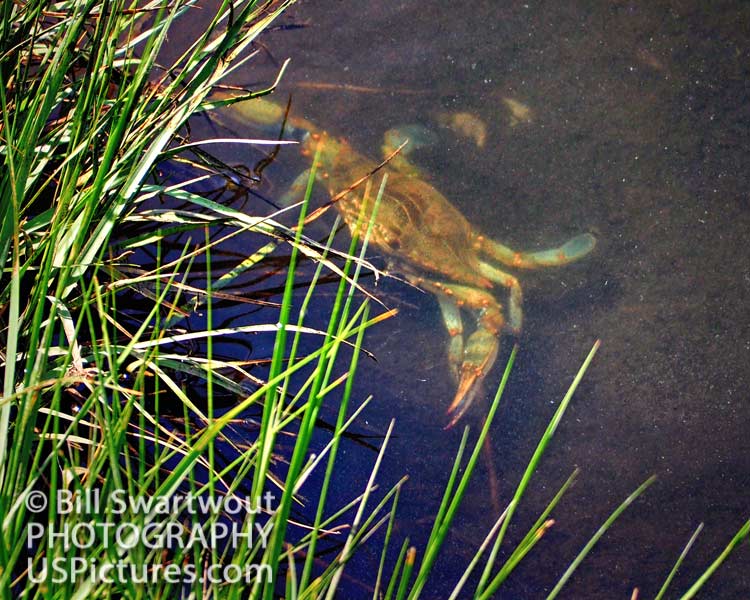
Chesapeake Bay Blue Crab lurking in a marsh at Assateague Island, Maryland.
Prints available: CLICK HERE
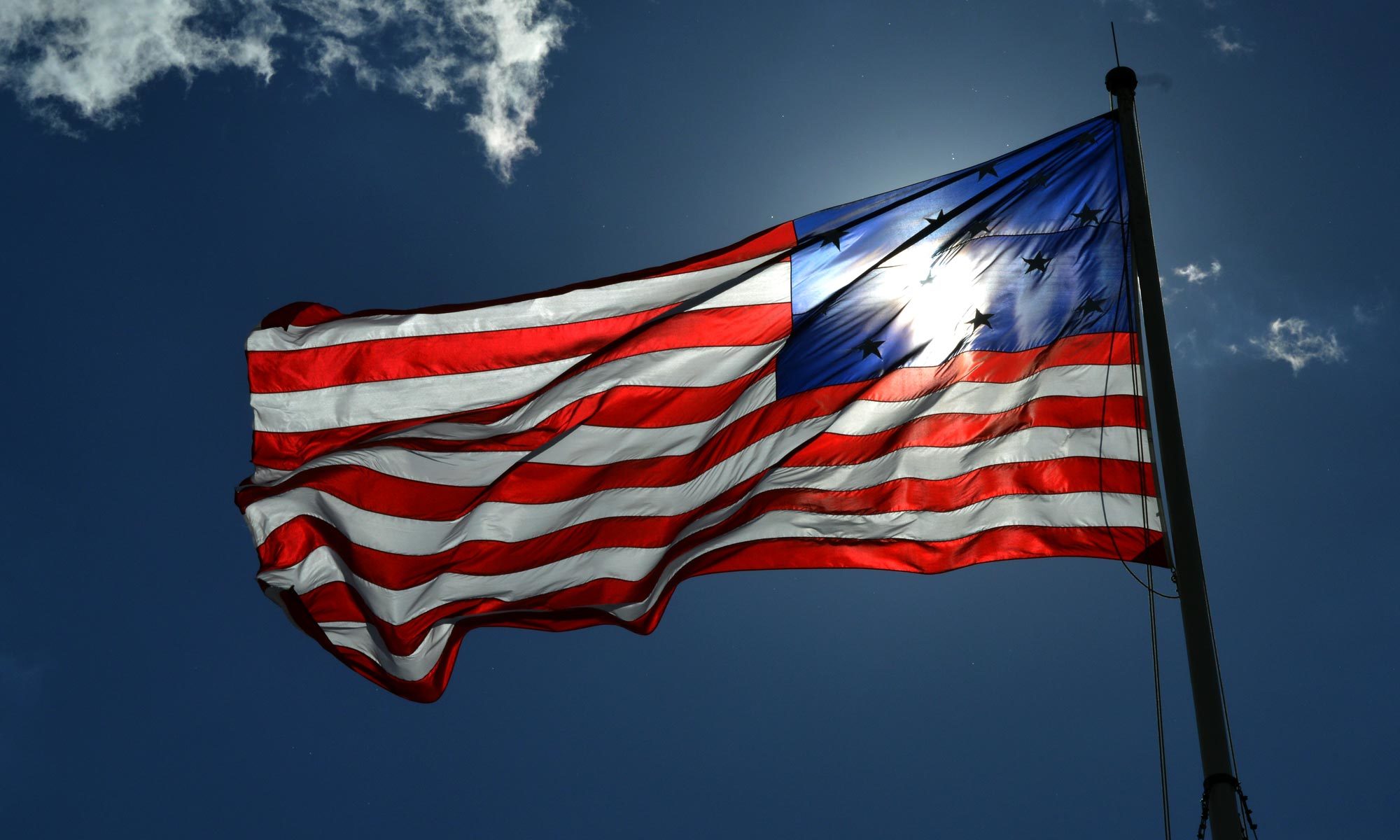
U.S. Pictures: Bill Swartwout Photography
United States Landscape & Seascape Pictures

Chesapeake Bay Blue Crab lurking in a marsh at Assateague Island, Maryland.
Prints available: CLICK HERE
Celebrating the Watermen of the Chesapeake Bay is series of non-traditional Christmas trees, three of which are located at the Fisherman’s Village complex, just east of Kent Island.
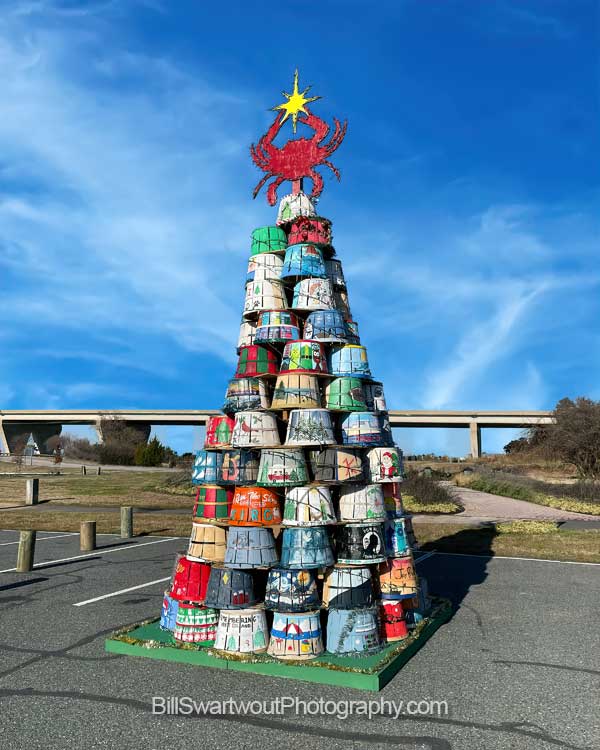
Merry Crabby Christmas – Merry Crabness. This tree, along with two others are located at the Waterman’s Memorial in Grasonville, Queen Anne’s County, MD. Bushel Basket Trees are a common site on the Eastern Shore in several of the small water-oriented towns. Other sightings: Cambridge, Rock Hall, St. Michaels, Berlin (on the road to Assateague Island).
In Maine and other New England states they have lobster trap trees – similar but not the same as “From the Land of Pleasant Living on the Eastern Shore!”
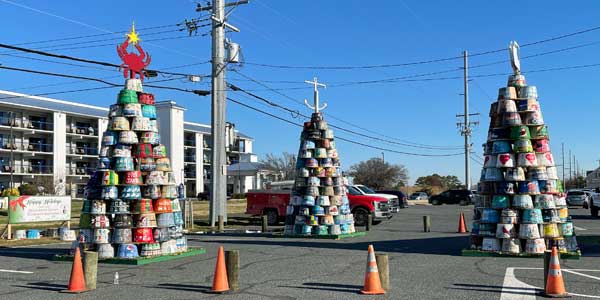
We got started on this photo project because we saw a picture and then found this bit of description on a Facebook post: “These baskets are at fishermans inn in Grasonville , they also have a lot of meaning , mostly not all but a lot have our local waterman’s names and drawn pictures of their boats ect on them that worked on the water most of their lives its located at the watermans memorial , I think there is 3 trees this year” (by Commenter, Michael Timms)
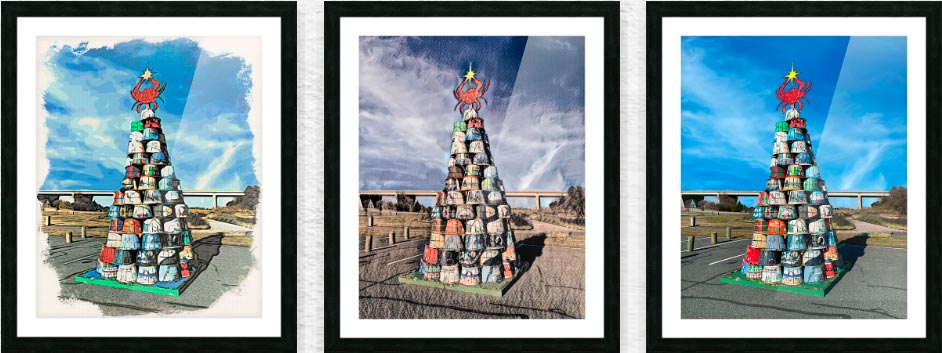
Each tree has a meaning and each basket has a meaning. Themes might include history, celebration, honor, remembering someone and/or simply the joy of holiday spirit.
Here is a Bushel Basket Christmas Tree found near the town of Berlin, MD along Route 611.
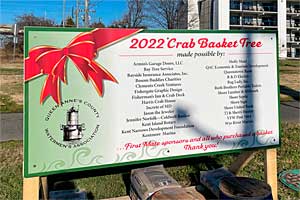
These trees would not be possible without the support of generous sponsors. The sign thanking/acknowledging them, erected by the Queen Anne’s County Watermen’s Association, is located at the site.
The Sponsors listed are: Armin’s Garage Doors LLC, Bay Tree Service, Bayside Insurance Associates Inc, Clements Creek Ventures, Fishergate Graphic Design, Fisherman’s Inn & Crab Deck, Harris Crab House, Jennifer Norfolk–Coldwell Banker, Kent Island Rotary, Kent Narrows Development Foundation, Kentmorr Marina, Molly Maid, QAC Economic & Tourism Development, Queenstown Bank, R&D Electric, Rag Lady Inc, Ruth Brothers Portable Toilets, Shore Lumber & Millwork, Shore Septic, Shore Sign, Shore United Bank, TJ & Sherri Hunter, VFW Post 7464, and Wye River Marine. The sign is thanking … First Mate sponsors and all who purchased a basket. Thank you!
Of course a Christmas Tree need lights for viewing at night. These Crab Basket Trees are no exception.
Yes, you can purchase the wall art photographs in a variety of substrates as well as on Home Decor, Apparel and Other Items.
Link to: Bill’s Gallery with the Crab Basket Trees.
Link to: Bill’s Redbubble Shop with dozens of unique items, apparel and decor.
I met Randy, the Great Egret (Ardea alba) , at Myrtle Beach State Park on a recent road trip. He was standing on top of the shelter on the fishing pier and, evidently, had a great itch. The beautiful white plumage and the regal posture of this fascinating bird makes him really stand out in a crowd, so to speak. One cannot help but notice him as he struts around acting so sure of himself.
No, I did not name him. A couple of fishermen on the pier told me he hangs around so much they all call him Randy. He keeps an eye on the fishing lines and is quick to react whenever a fish spits out a hook and tries to swim away. Seems like easy picking to me – smart bird.
Here’s a picture of Randy, the Great Egret, in an advantageous location on top of the pavilion on the pier. From this vantage point he can keep an eye on everyone and every thing. He seems to trust the fishermen on the pier more that he does the fact that a fish might throw a hook and get away. Randy tries to make sure that nothing “tasty” gets away.
The great egret is also known as the common egret or large egret. It is a wading bird found in both tropical and temperate regions. The great egret is long-legged and long-necked, with a long, thin bill. They are mostly white in color with black tips on their primary feathers. This makes them look almost as if they have been dipped in paint.
The great egrets has been known to live up to 20 years in captivity and up to 30 years in the wild. They feed mostly on fish, frogs, snakes and insects but will also eat reptiles, birds’ eggs and small mammals when needed. Their hunting style is very similar to that of an osprey or an eagle which means they will sit patiently waiting for prey to approach before striking quickly with their long sharp bill which can be up to two feet long!
Great Egrets are monogamous birds meaning they mate for life which usually lasts about 5 years before one dies off leaving behind one chick who will then be cared for by both parents until it reaches maturity at 2 years old when it can fly off into the sunset on its own
While this particular bird was photographed on the fishing pier at Myrtle Beach State Park in South Carolina, this just as easily might be see at any of several fishing piers along the east coast. There are many “Ralphs” just looking for an easy meal. The great egret is also known as the common egret, large egret, or great white egret or even the great white heron.
Photographs of this Great Egret are available at my online stores on a variety of substrates and also on home decor items. Use the links below to shop.
Link to: Egret Scratching an Itch at Bill’s FineArtAmerica/Pixels Store.
Link to: Bill’s Full Fine Art America/Pixels Gallery
The great white egret is a magnificent bird, with a wingspan that can reach up to seven feet. Its bill is long, thin and black at the tip. It is used for catching fish and insects in shallow water or wetlands. The great white egret has dark legs that are set far back on its body. It has a long neck and head with a large yellow bill.
This bird can be found in North America, Central America and South America as well as Eurasia and Africa. They tend to live near water where they build their nests which are made from sticks or reeds and lined with mud or grasses. A pair of great white egrets may mate for life; however, if one dies then another mate will usually be found soon after this happens during breeding season (March – June). They lay three eggs which hatch after about twenty days depending on temperature levels outside at this time of year (spring). The chicks will fledge after sixty days but continue feeding until about eighty days old when they become independent from their parents once again!
A Great Blue Heron hides among the marsh grasses fishing for a meal.
Fishing is a way of life in Murrells Inlet, and not just for those make their living at it. Fishing, both within the creek and in the ocean is a part of the history, a bond with the place and even among the inhabitants – both the humans and the lesser beasts and critters.
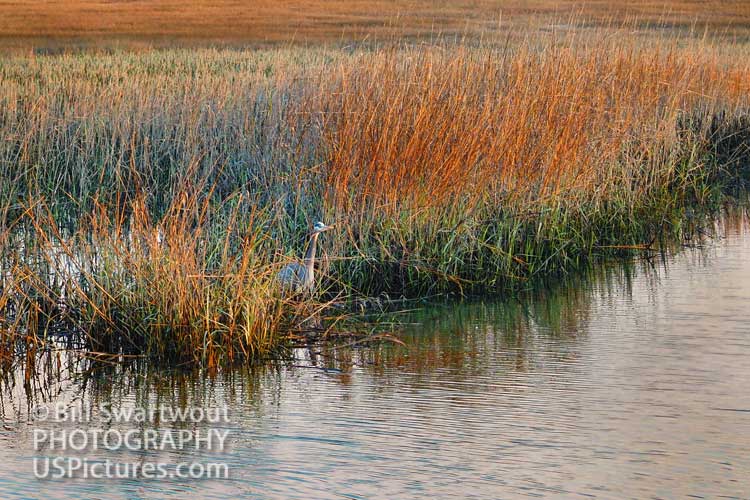
As the fishing depends on the fish, so the fish depend on the marsh and the entire ecosystem. This symbiotic relationship gives rise to some beautiful and unique scenery – that often looks as good in black and white as it does in full color.
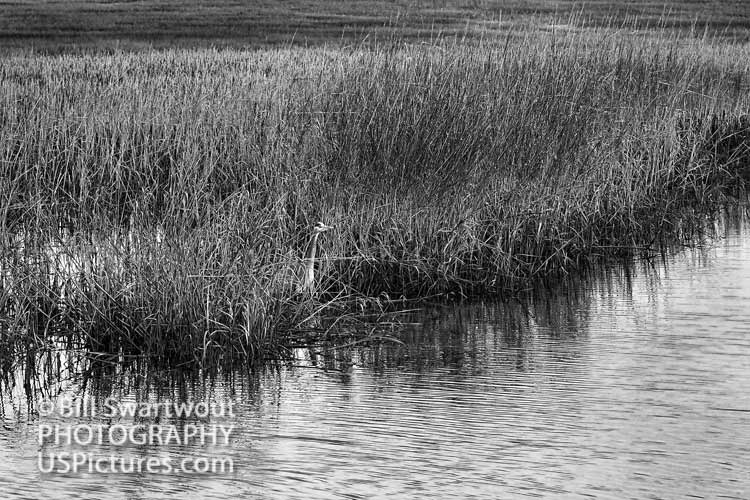
From the time of its formation about 6,000 years ago, the Murrells
Inlet saltmarsh has been a source of food for local inhabitants. Native
Americans depended on the marsh for the seasonal provision of clams,
oysters, and fish, a tradition which persisted through colonial and
plantation times, and continues today. In the 20th century, recreational
and commercial fishing broadened and increased local dependence
upon the marsh.
Click the links below to see the wall art substrates available for these photographs.
Link: Lurking in the Marsh at Murrells Inlet SC
Link: Lurking in the Marsh at Murrells Inlet Monochrome
Link to: Bill’s full Gallery at Pictorem
Link to: Bill’s Gallery hosted by Fine Art America
Saltmarshes like Murrells Inlet provide a rich and sheltered habitat for
fish, from baitfish like Mummichog and striped mullet on up to gamefish of the nearshore ocean, such as grouper. (Just naming two of many examples here.) This is because of the abundance and variety of food available within the marsh, and the relative absence of large predators (that Blue Heron notwithstanding). Scientists have found that more than 75 percent of nearshore ocean fish use the marsh at some stage of their life-cycle, for spawning, for juvenile growth and/or for a seasonal food source.
From an environmental standpoint, maintaining a healthy marsh is essential
to maintaining a healthy ocean fishery. The long view values not only the fish, but the marsh that made the fish and, of course our friend, that long-legged fishing bird, lurking in the marsh.